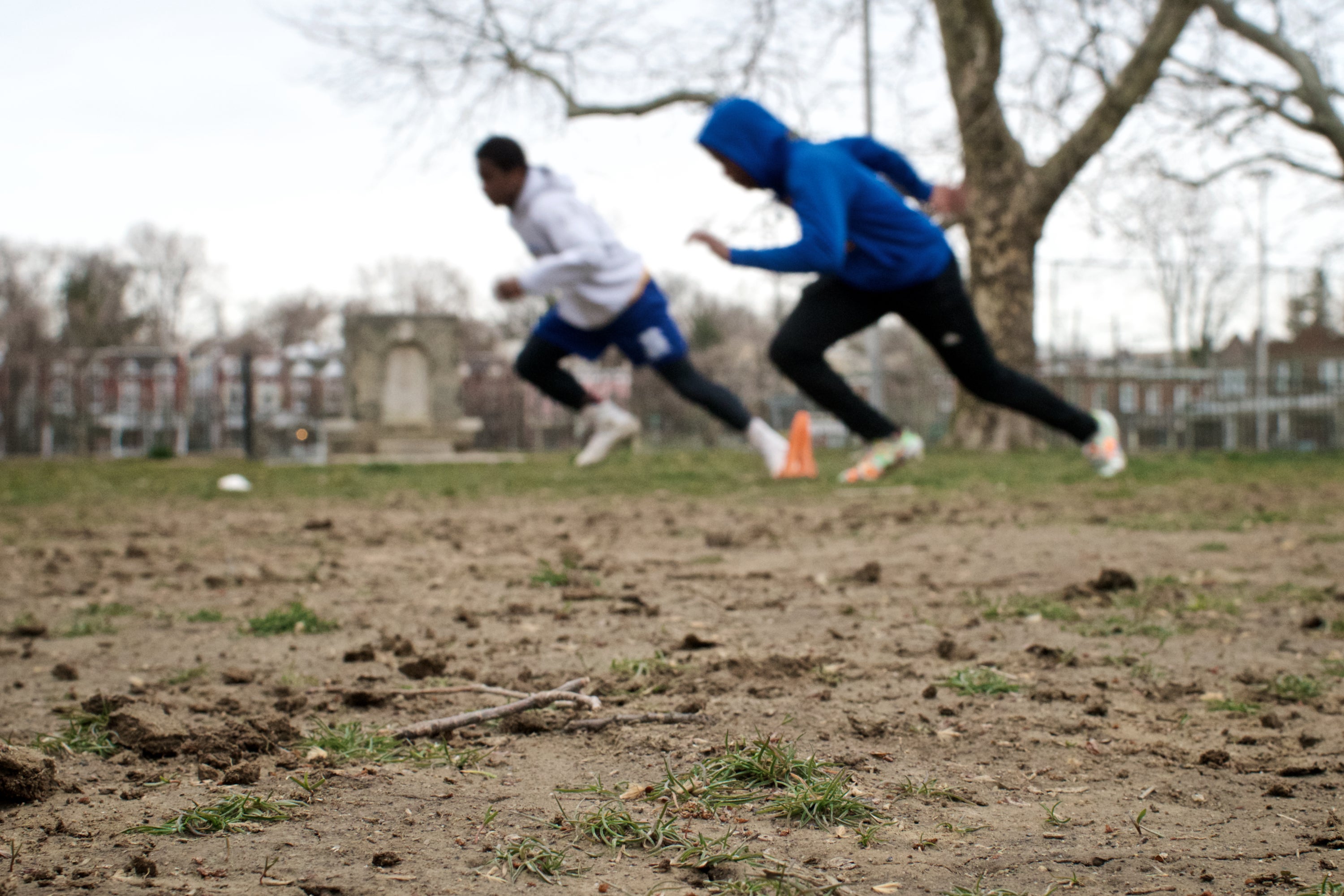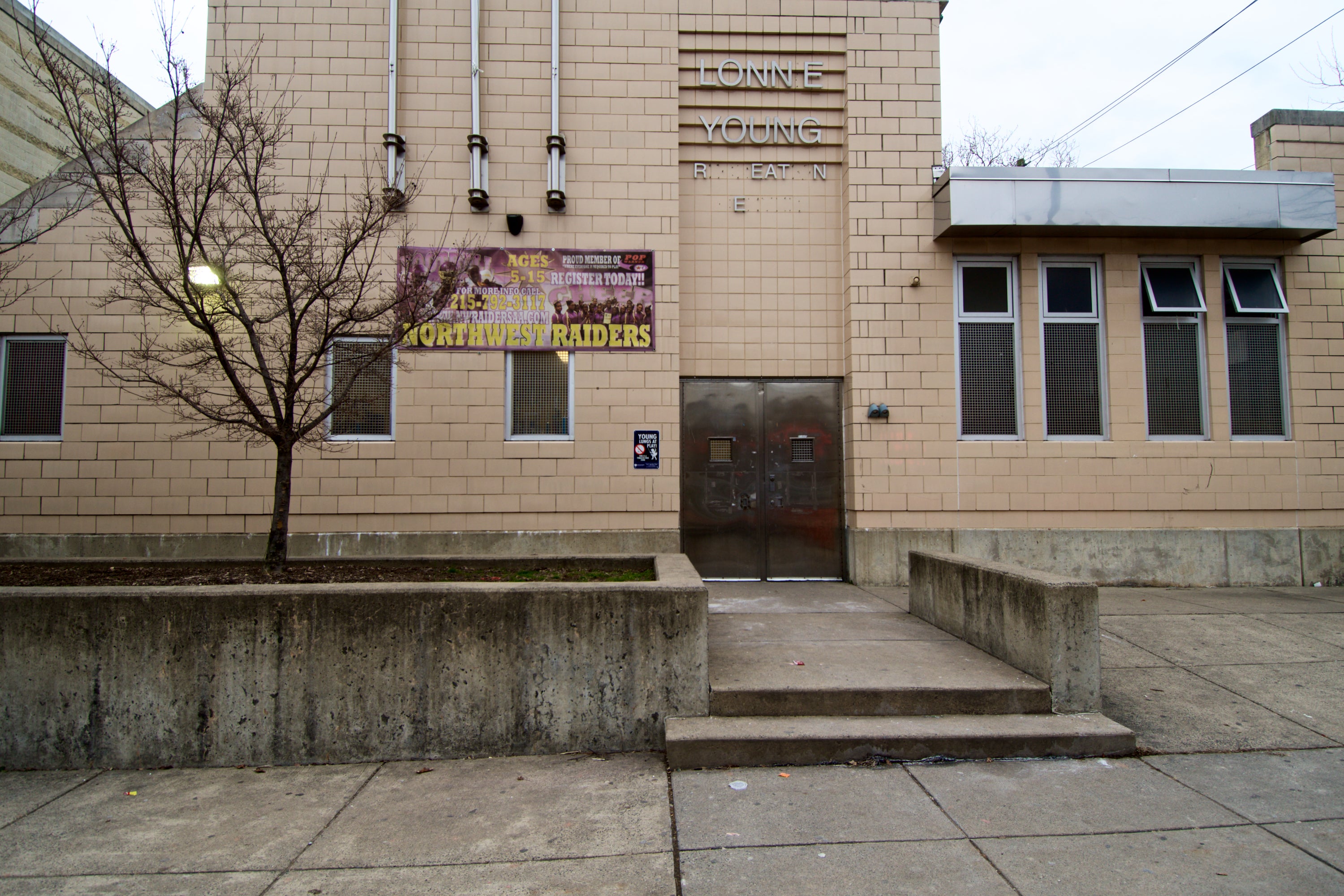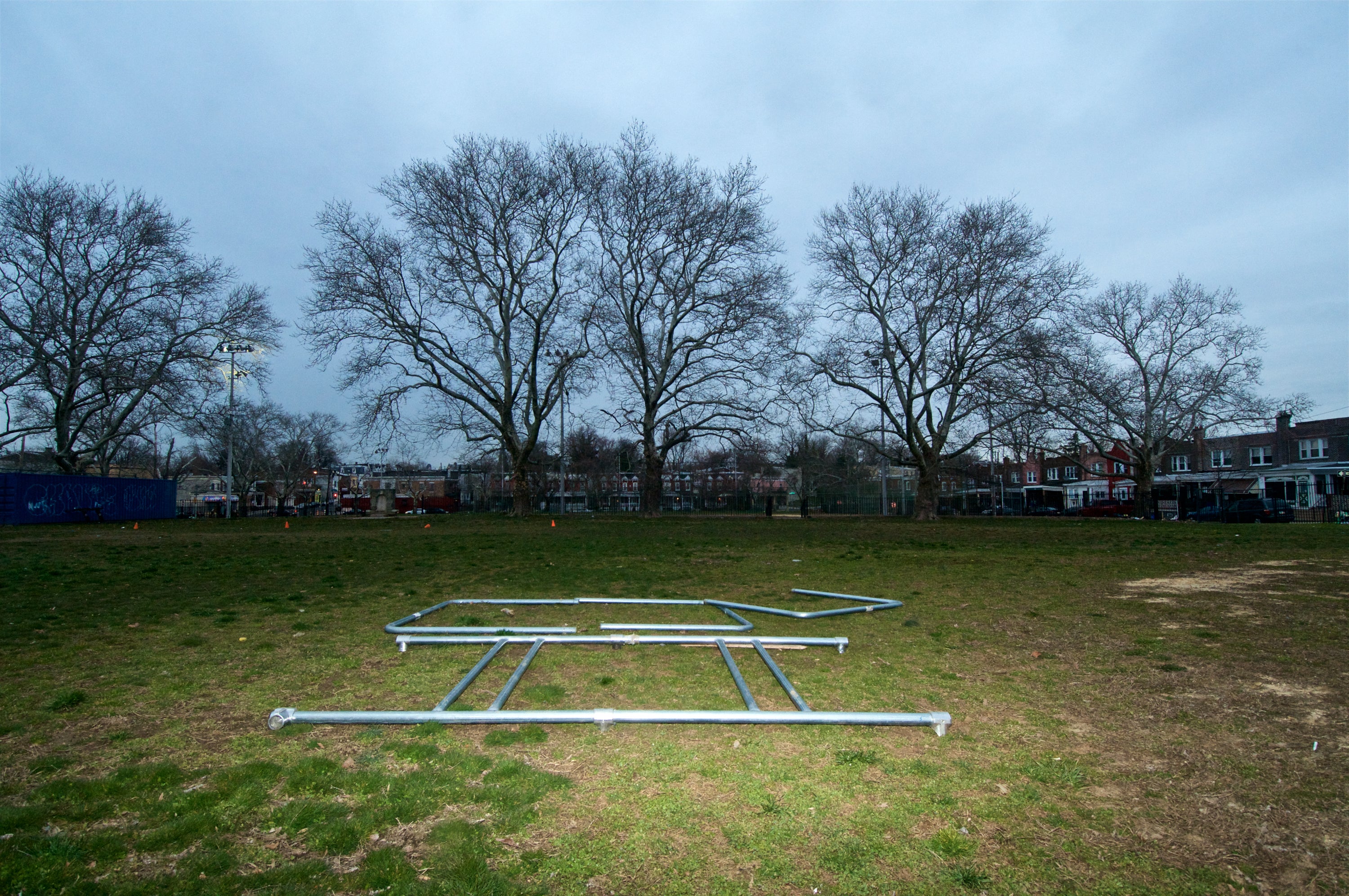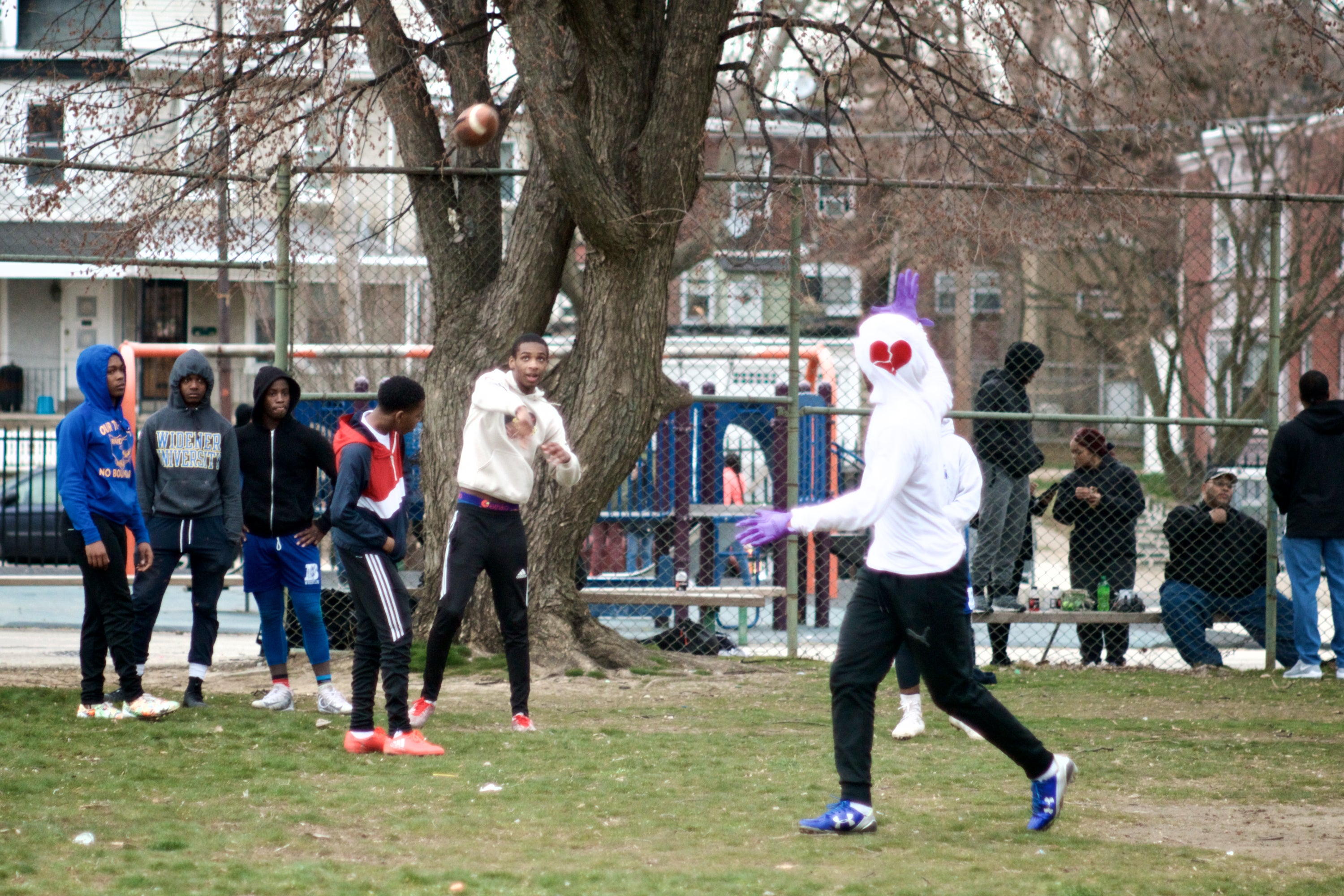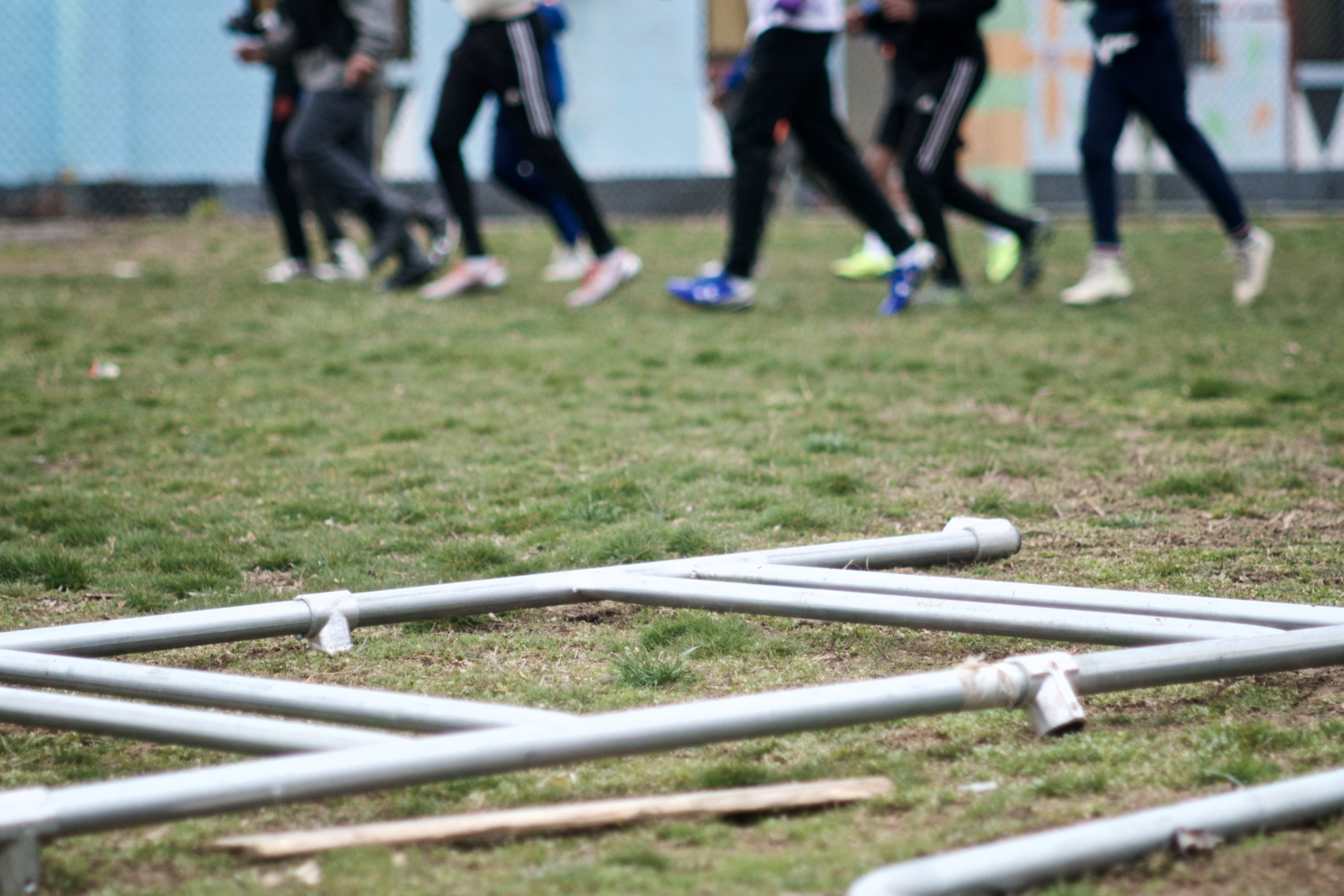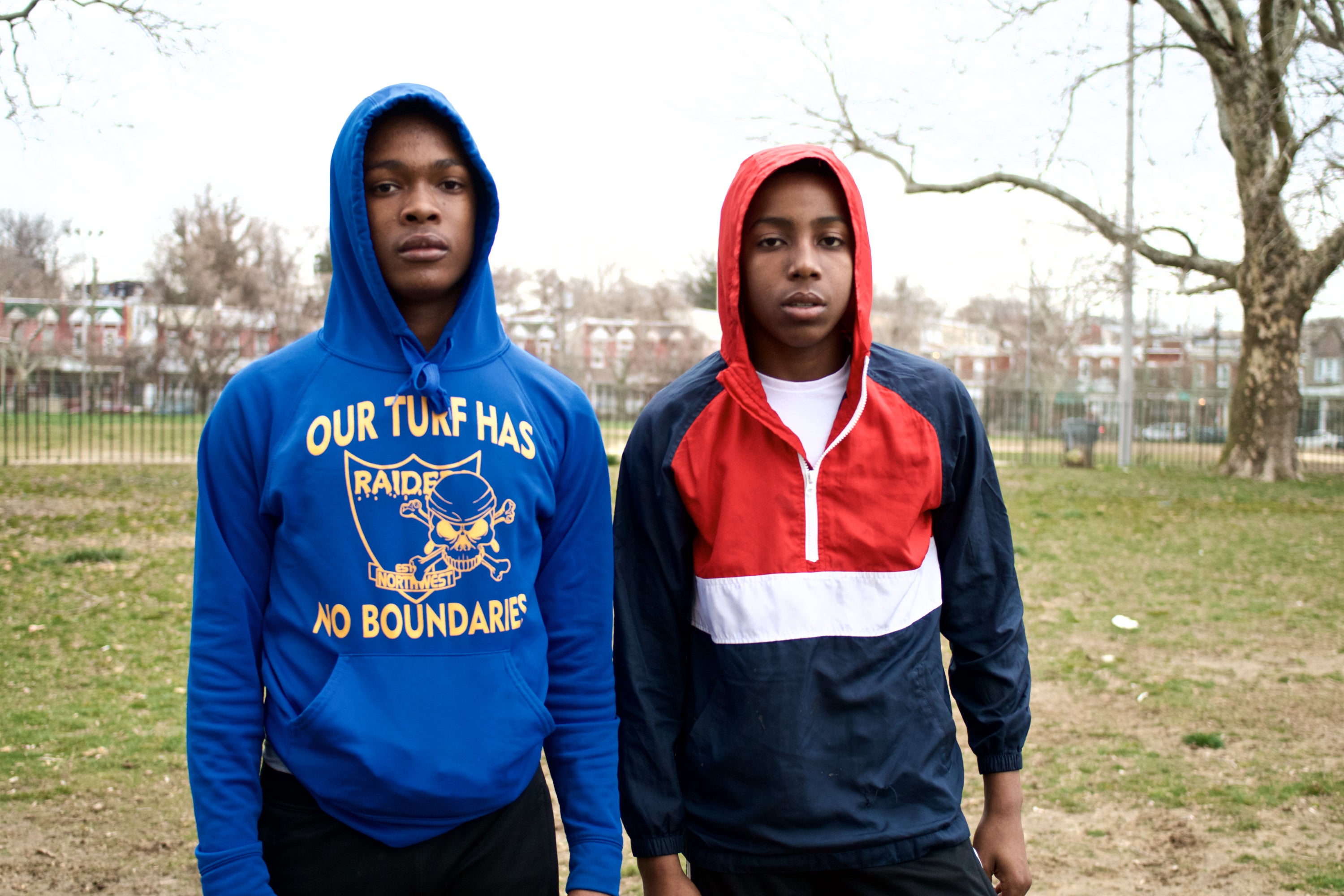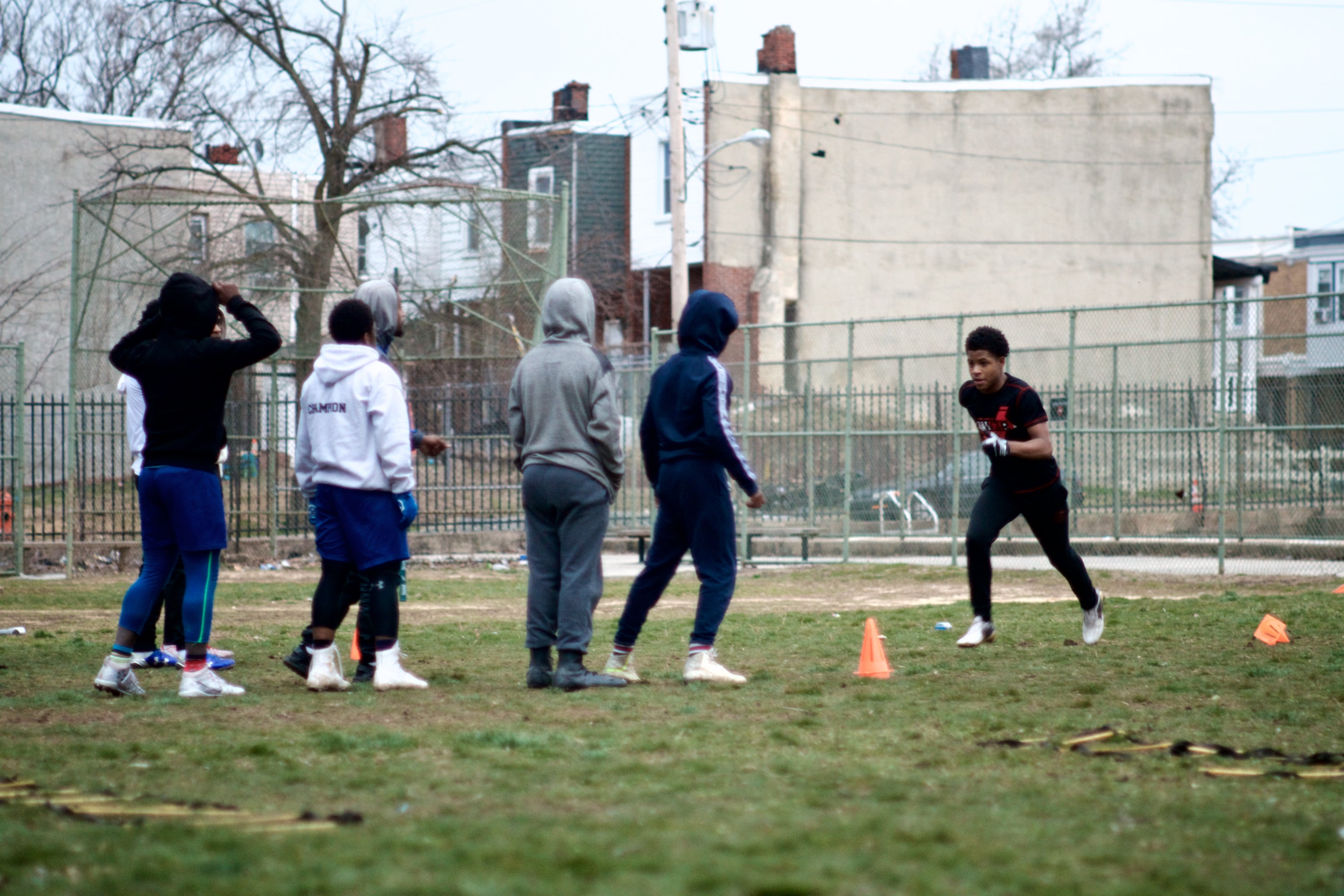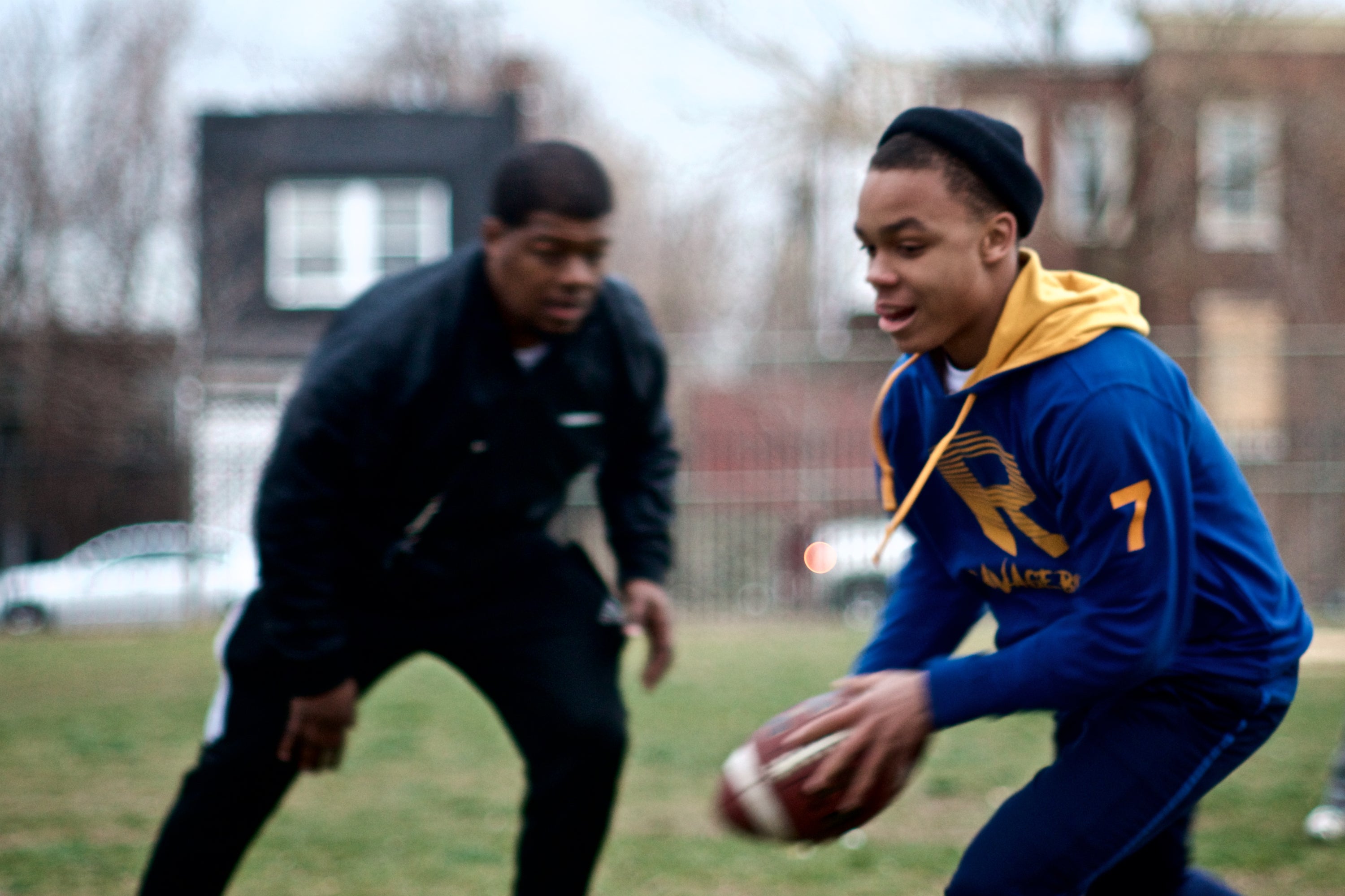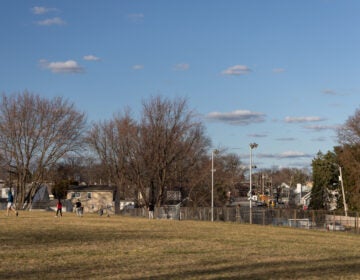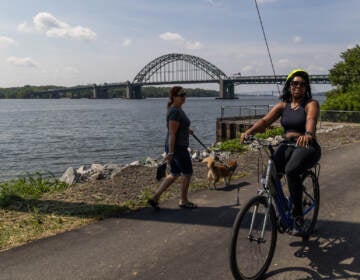After winning the Super Bowl of youth football, Germantown’s Raiders search for a field of their own
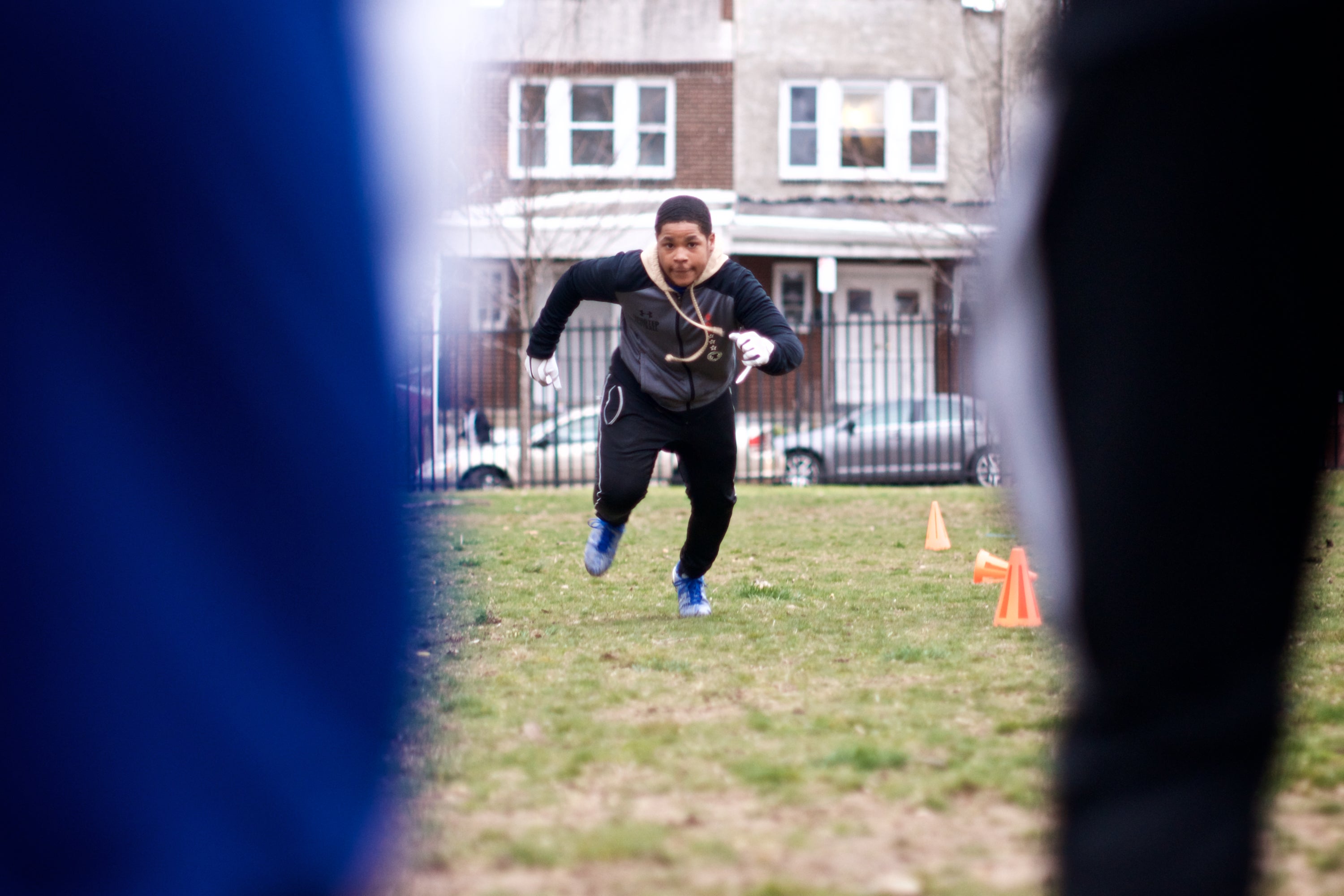
Boys scrambled backward across the threadbare field at Lonnie Young Recreation Center in East Germantown on a recent early spring evening, running pursuit drills over sparse patches of grass as their coaches blew whistles and barked commands. It was the first practice session for the Northwest Raiders football team since December when the varsity squad ended the season with its fourth straight Pop Warner national championship.
Jerome Davis, a 15-year-old who plays tight end, watched from the sidelines as his teammates ran back and forth across the dirt. Davis said he joined the Raiders last year after seeing how hard the players worked. “I saw they were doing something different. More working, running more, doing more exercise — and winning,” he said. Given the team’s grit and success, it was a shame they had to practice on such a terrible field, he added.
“We can’t play how we want to play on it. Too many ditches, too much mud, not a lot of space. We don’t have a lot of room on the field,” Davis said. “We’ve been working, putting it on for the city, brought home the trophies, won the nationals, and I think we deserve a new field.”
It’s a lament city officials have heard for years from youth athletic organizations that are stuck practicing and playing in shabby spaces. What’s different now is that, for the first time in decades, the city is offering them hope that their long-nurtured dreams of building new, modern home fields may actually be realized in the near future. Philadelphia’s Rebuild initiative aims to spend $500 million to revitalize parks, recreation centers, playgrounds, and libraries over seven years. If, that is, of course, the soda tax that is providing much of the funding survives an ongoing legal challenge from the beverage industry.
Aside from Rebuild, Parks and Recreation has no capital funding for fields and no citywide park renovation plan, as the department’s capital spending is reserved for critical safety repairs, Parks and Recreation Commissioner Kathryn Ott Lovell said.
While gyms that can serve as public meeting spaces are the most-needed type of parks facilities, the most vocal and persistent demands are for football fields, according to Lovell. “Everyone wants a football field,” she said at a Rebuild Oversight Board meeting in January. “Every little league team in the city wants their own field.”
That’s in part because players and coaches have been wowed by the smattering of new home fields that the city and other sponsors have managed to fund in recent years. They include the artificial turf field at Hunting Park used by the North Philadelphia Aztecs football team, which former Philadelphia Eagles player Michael Vick helped pay for, and the Blackhawks’ field at 11th Street and Cecil B. Moore Avenue, which received funding from the Eagles and St. Joseph’s Preparatory School. Another field project is finishing up at Smith Playground in South Philadelphia with help from former Eagles defensive end Connor Barwin.
“We’re sort of victims of our own success,” Lovell said in an interview. “We’ve built these fields for other folks, and it’s hard when you’re a team of kids who are going to compete against the Aztecs or the Blackhawks. You go to their field, and then they come to play against you. You’re not playing at your home field — you’re playing at some borrowed field — because your home field stinks. It’s hard. ‘Why do they get one and we don’t?’”
Home for the Northwest Raiders is Lonnie Young Recreation Center, where a wall and trees divide the outdoor space into two fields. One section is lower than the other, and neither is large enough to play a game. Coaches start each season by picking up scattered drug paraphernalia, used condoms, and dog poop; players complain of uneven ground and other hazards. “There’s a lot of damage to the field. It’s muddy, with a lot of rocks and sticks,” said 14-year-old varsity player Sekye Miles. “If you fall and slip, you’ll hurt yourself on it. It’s a lot of dirt piles and grass growing up.”
The upper field is unlit so after dark all six Raiders teams, from the Tiny Mites through the varsity team, crowd onto the lower field together for practice. When it rains, the lights on the lower field cut out. As for games, the organization pays to use Martin Luther King High School’s practice field, which is also in bad shape and lacks lighting, coaches say.
Idris Guyton is the Raiders’ cheerleading coach and team spokesman. The contrast between the fields his players train on and the Aztecs’ home turf frustrates him.
“Our kids see that field, and they’re like, ‘Oh, that’s amazing. They have a really cool field.’ And then we go back to our high school practice field, and the kids aren’t proud,” he said. “They’re proud to be a Raider, but when you have someone come to your home, you want them to say, ‘Wow, this is an amazing place.’”
Guyton noted that Mayor Jim Kenney has focused on that type of disparity in arguing for the soda tax. When he first proposed a big boost in parks spending two years ago, Kenney cited the experiences of Philadelphia kids who play away games in other cities and towns. “When… we have suburban people come into our communities and look at what our kids have to play with, and then our kids go out to the suburbs and play in pristinely manicured fields, it makes us feel like second-class citizens, and we’re not,” Kenney said at the time.
For Robert Ford, the founder and president of the Overbrook Monarchs team that plays at Granahan Recreation Center in West Philadelphia, the poor condition of city fields is a safety issue. Ford feels lucky to have a locked gate to keep out dogs and dirt bikers, and enough space to host home games. But the coaches still clean, mow, and line the field themselves every summer, and even their work can’t prevent players from hurting themselves on the old, uneven playing field.
“Over the years, a lot of our children have had ankle and knee injuries that could have been prevented if we had the right type of turf,” said Ford. “Sometimes your cleat gets stuck in one spot; your foot stays still while the rest of your body is trying to go in another direction. Because of the muddy, sticky field we have, I believe that happens more on our field than it would on a newer field or a synthetic turf-type field. That’s my number one reason for wanting a new field.
A number of other sports, including soccer, lacrosse, and field hockey, also suffer from the city’s lack of good fields. Demand is particularly high for football fields, as well as 90-foot baseball fields because so many charter schools have opened over the past 20 years and started their own teams, said George Matysik, executive director of the Philadelphia Parks Alliance. “Typically those charter schools don’t have the same type of athletic facilities that traditional schools were created with decades ago. That’s leading toward a greater need from those charter schools for these facilities that are managed by Parks and Recreation,” he said.
Lovell cited the example of Boys’ Latin of Philadelphia, a charter high school for boys that opened in 2007 in a former Catholic elementary school building in West Philadelphia. The site lacks high school playing fields, so the school’s teams practice on an “awful” field at nearby Christy Park and compete with a youth league for field time, Lovell said.
The trends driving greater demand for fields have not come with an increase in resources. Finding money for park projects remains a daunting task. Fifteen years ago, the Northwest Raiders looked into leveling the ground at Lonnie Young and putting in a new field, but dropped the plan over the $1.4 million cost, coach Eric Jones said. The Raiders and the Mt. Airy Bantams Youth Association later agreed to work together to upgrade the field at Awbury Park in northwest Philadelphia, but fundraising for the $1.2 million project was unsuccessful. “Things grind to a halt when you talk about the costs,” Guyton said. “It’s hard to get the wheels rolling, politically.”
Lovell is sympathetic to the challenge, but the Parks budget is stretched thin as it is, she said. She notes that each City Council district is allotted about $1 million a year for parks expenses. If some money were set aside each year, there would be enough for one field renovation after eight to nine years, or perhaps five to six years for a less expensive project or one that receives private funding to supplement city dollars, she said.
If the state Supreme Court upholds the soda tax and Rebuild gets underway, it does appear likely that the city will build at least a few new multi-use fields that are appropriate for football. The 60 sites proposed for the first round of Rebuild projects include some with existing football fields, such as Al Pearlman Sports Complex. Lovell said new turf would likely be part of renovations at those facilities unless the surrounding communities are not interested in that use.
Lonnie Young and Granahan recreation centers didn’t make it into Rebuild’s first proposed round of renovations. That means that the Raiders’ and Monarchs’ field requests would still be subject to a review process that considers neighborhood demographics, the geographic distribution of facilities, local demand and other variables when deciding which sites to renovate and which to leave untouched, Lovell said. The availability of private funds will also continue to be an important factor. “I will say, it is easier to get a field done if there are existing resources at the table or a willing partner who’s there to support it,” she said.
WHYY is your source for fact-based, in-depth journalism and information. As a nonprofit organization, we rely on financial support from readers like you. Please give today.




